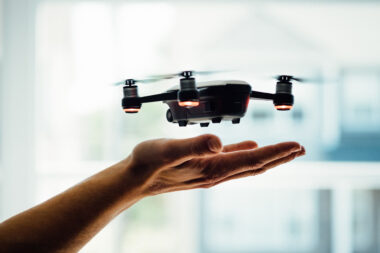As the world grapples with the pressing need to transition to renewable energy sources, offshore wind energy has emerged as a promising solution. Among the innovative technologies in this realm, floating wind turbines represent a significant breakthrough. Unlike traditional fixed bottom turbines, floating wind turbines can be installed in deeper waters, where wind speeds are typically higher and more consistent.
The Evolution of Wind Energy
Early Developments
Wind energy has been harnessed for centuries, from ancient windmills used for grinding grain and pumping water to the first electricity generating wind turbines developed in the late 19th and early 20th centuries. The modern era of wind energy began in the 1970s, driven by the oil crisis and growing environmental awareness. Technological advancements have since led to the development of large scale onshore and offshore wind farms.
The Shift to Offshore Wind
Offshore wind farms have several advantages over their onshore counterparts, including stronger and more consistent wind resources, less visual and noise impact on communities, and the availability of large, underutilized spaces. However, traditional offshore wind farms, which are fixed to the seabed, are limited to relatively shallow waters, typically less than 60 meters deep. This limitation restricts access to the vast wind resources available in deeper waters.
Introduction to Floating Wind Turbines
Concept and Design
Floating wind turbines are an innovative solution that allows wind energy generation in deep waters, typically between 60 and 1,000 meters. These turbines are mounted on floating platforms anchored to the seabed with mooring lines. The design and engineering of these platforms draw on decades of experience from the offshore oil and gas industry.
Types of Floating Platforms
There are three primary types of floating platforms used for wind turbines:
Spar-Buoy Platforms: These platforms use a long, vertical cylinder that extends deep below the water surface. The cylinder’s weight provides stability and keeps the turbine upright. An example is the Hywind Scotland project, which uses spar-buoy platforms.
Semi-Submersible Platforms: These platforms have multiple buoyant columns connected by horizontal beams. They offer stability through their wide footprint and low center of gravity. The WindFloat project off the coast of Portugal is an example of this type.
Tension Leg Platforms (TLPs): These platforms are anchored to the seabed with taut mooring lines, providing stability through tension. TLPs are generally lighter and use less material than spar-buoy or semi-submersible platforms, but their deployment is more complex.
Advantages of Floating Wind Turbines
Floating wind turbines offer several key advantages:
Access to Deeper Waters: By enabling the installation of turbines in deeper waters, floating platforms unlock vast new areas for wind energy development, particularly in regions with steep continental shelves.
Stronger Wind Resources: Winds tend to be stronger and more consistent further offshore, resulting in higher energy yields.
Reduced Visual Impact: Floating wind farms can be located further from shore, minimizing their visual impact and potential conflicts with other coastal activities.
Flexible Deployment: Floating turbines can be assembled onshore and towed to their installation site, reducing the complexity and cost of offshore construction.
Technological Components and Innovations
Turbine Design and Adaptations
Floating wind turbines must withstand the harsh marine environment, including high winds, waves, and saltwater corrosion. This necessitates robust designs and materials. Innovations in turbine technology, such as larger rotor diameters, improved blade aerodynamics, and advanced materials, enhance performance and durability.
Mooring and Anchoring Systems
Mooring and anchoring systems are critical for the stability of floating wind turbines. The choice of system depends on the water depth, seabed conditions, and platform type. Common mooring configurations include catenary (chains that rest on the seabed) and taut-leg (lines kept under tension).
Dynamic Cables
Dynamic cables connect the floating turbines to the onshore grid. These cables must withstand continuous motion and stress due to waves and currents. Innovations in cable design, including stronger materials and improved flexibility, are essential for reliable power transmission.
Remote Monitoring and Maintenance
Given the remote and challenging environment of offshore wind farms, advanced remote monitoring and maintenance technologies are crucial. These include sensors for real time data collection, drones for inspections, and autonomous underwater vehicles for subsea maintenance.
Environmental and Economic Benefits
Environmental Impact
Floating wind turbines offer several environmental benefits:
Reduced Carbon Emissions: Wind energy is a clean and renewable resource, contributing to the reduction of greenhouse gas emissions and reliance on fossil fuels.
Minimal Land Use: Offshore wind farms do not occupy valuable land resources, preserving landscapes and habitats.
Marine Ecosystems: Properly managed, floating wind farms can have minimal impact on marine life. In some cases, they may even create artificial reefs that benefit local ecosystems.
Economic Impact
Floating wind turbines can have significant economic benefits:
Job Creation: The development, construction, and maintenance of offshore wind farms create jobs in engineering, manufacturing, construction, and operations.
Energy Security: By diversifying the energy mix and increasing the share of renewable energy, floating wind turbines enhance energy security and reduce dependence on imported fuels.
Cost Competitiveness: While currently more expensive than fixed bottom turbines, the cost of floating wind technology is expected to decrease as the industry matures, economies of scale are realized, and technological innovations continue.
Challenges and Solutions
Technical Challenges
Several technical challenges must be addressed to fully realize the potential of floating wind turbines:
Stability and Motion: Maintaining the stability of floating platforms in rough seas is complex. Advanced control systems and platform designs are crucial for mitigating excessive motion.
Durability and Maintenance: The harsh marine environment poses significant durability challenges. Innovations in materials, protective coatings, and remote maintenance technologies are essential.
Grid Connection: Ensuring reliable grid connection over long distances and through dynamic cables requires robust solutions and infrastructure.
Economic Challenges
The economic viability of floating wind turbines faces several hurdles:
High Initial Costs: The initial investment for floating wind farms is higher than for fixed bottom turbines. Continued research, development, and demonstration projects are needed to drive down costs.
Financing and Risk: Securing financing for large scale floating wind projects can be challenging due to perceived risks. Clear policy frameworks, government support, and private sector engagement are crucial for attracting investment.
Market Development: Developing a robust market for floating wind energy requires coordinated efforts among stakeholders, including governments, industry, and research institutions. Creating favorable regulatory environments and fostering international collaboration are key.
Case Studies and Projects
Hywind Scotland
Hywind Scotland, developed by Equinor, is the world’s first floating wind farm, located 25 kilometers off the coast of Peterhead, Scotland. It consists of five turbines, each with a capacity of 6 MW, mounted on spar-buoy platforms. Since its commissioning in 2017, Hywind Scotland has demonstrated the viability of floating wind technology, achieving high capacity factors and operational efficiency.
WindFloat Atlantic
The WindFloat Atlantic project, located off the coast of Portugal, features three semi-submersible platforms, each supporting an 8.4 MW turbine. Developed by a consortium led by Principle Power, this project showcases the potential of semi-submersible platforms in deep water locations. WindFloat Atlantic began operations in 2020 and has been instrumental in advancing floating wind technology.
Kincardine Offshore Wind Farm
The Kincardine Offshore Wind Farm, situated off the coast of Aberdeenshire, Scotland, is another pioneering floating wind project. It employs semi-submersible platforms to support its turbines, including a record breaking 9.5 MW turbine. The project aims to generate 50 MW of clean energy, demonstrating the scalability of floating wind technology.
Future Prospects and Innovations
Scaling Up
The future of floating wind turbines lies in scaling up projects to larger capacities and deploying them in new regions. Advances in turbine technology, platform design, and installation methods will enable the development of floating wind farms with capacities exceeding 1 GW.
Hybrid Systems
Integrating floating wind turbines with other renewable energy sources, such as wave and solar power, can enhance the reliability and efficiency of offshore energy systems. Hybrid systems can provide more consistent power generation and optimize the use of available marine space.
Policy and Regulatory Support
Strong policy and regulatory frameworks are essential for the growth of the floating wind industry. Governments must provide clear guidelines, financial incentives, and support for research and development to encourage investment and innovation.
International Collaboration
Global collaboration is crucial for the advancement of floating wind technology. Sharing knowledge, best practices, and technological innovations can accelerate the deployment of floating wind turbines worldwide. International partnerships can also facilitate the development of standardized designs and practices, reducing costs and improving efficiency.
Environmental and Social Integration
Ensuring that floating wind projects are environmentally sustainable and socially acceptable is key to their success. Comprehensive environmental impact assessments, stakeholder engagement, and the implementation of best practices in marine conservation can mitigate potential negative impacts and enhance the benefits of floating wind farms.
Floating wind turbines represent a transformative technology in the quest for sustainable and renewable energy. By enabling the exploitation of deep water wind resources, they hold the potential to significantly expand the capacity of offshore wind energy, contributing to global efforts to combat climate change and transition to a low carbon economy. While challenges remain, ongoing research, innovation, and collaboration are paving the way for the widespread adoption of floating wind technology. As the industry matures, floating wind turbines will play an increasingly vital role in the global energy landscape



